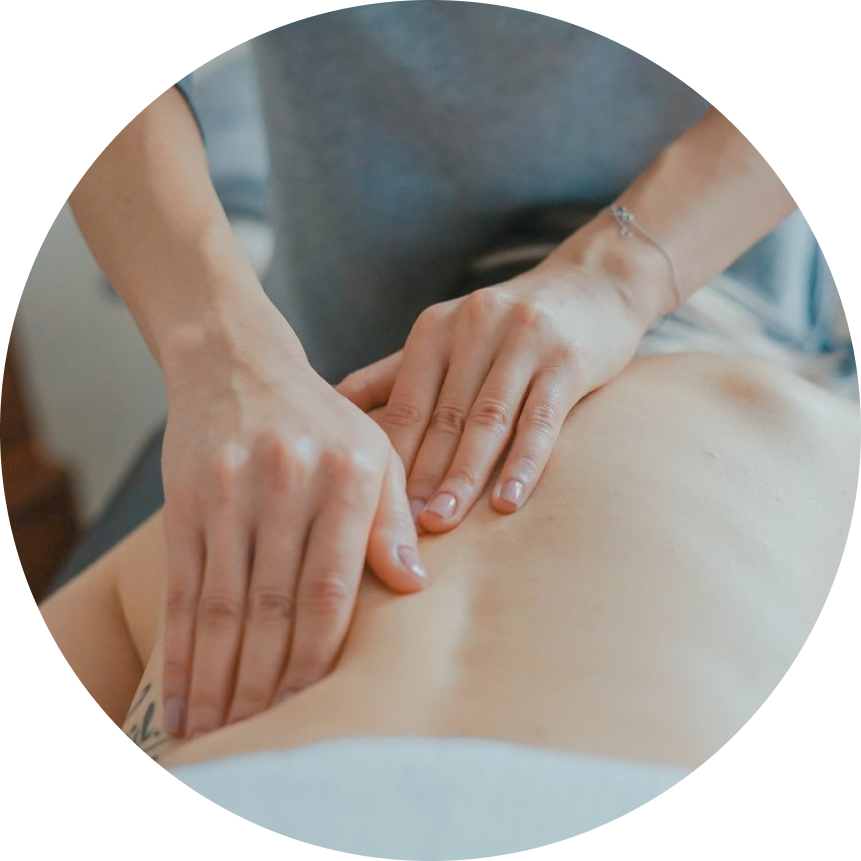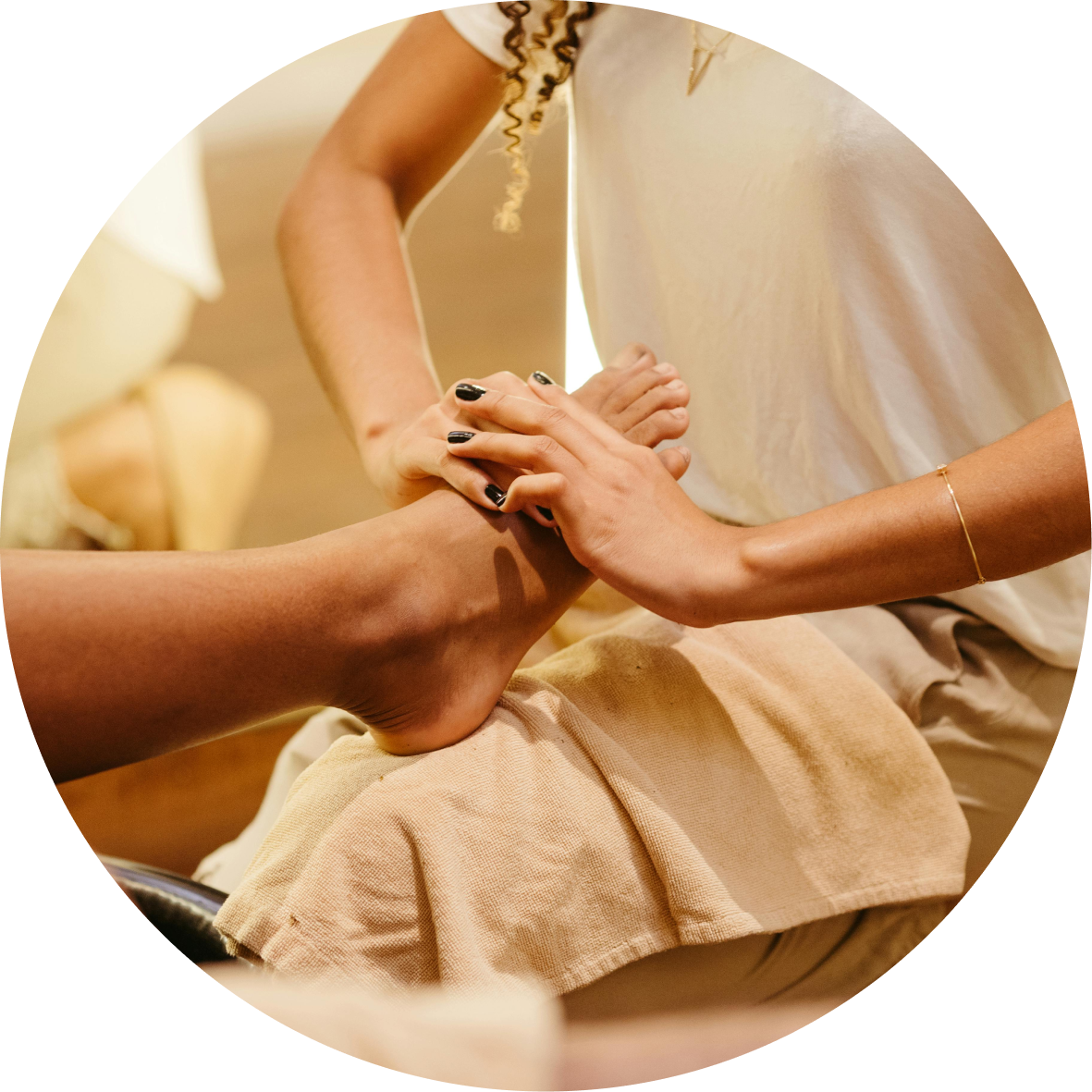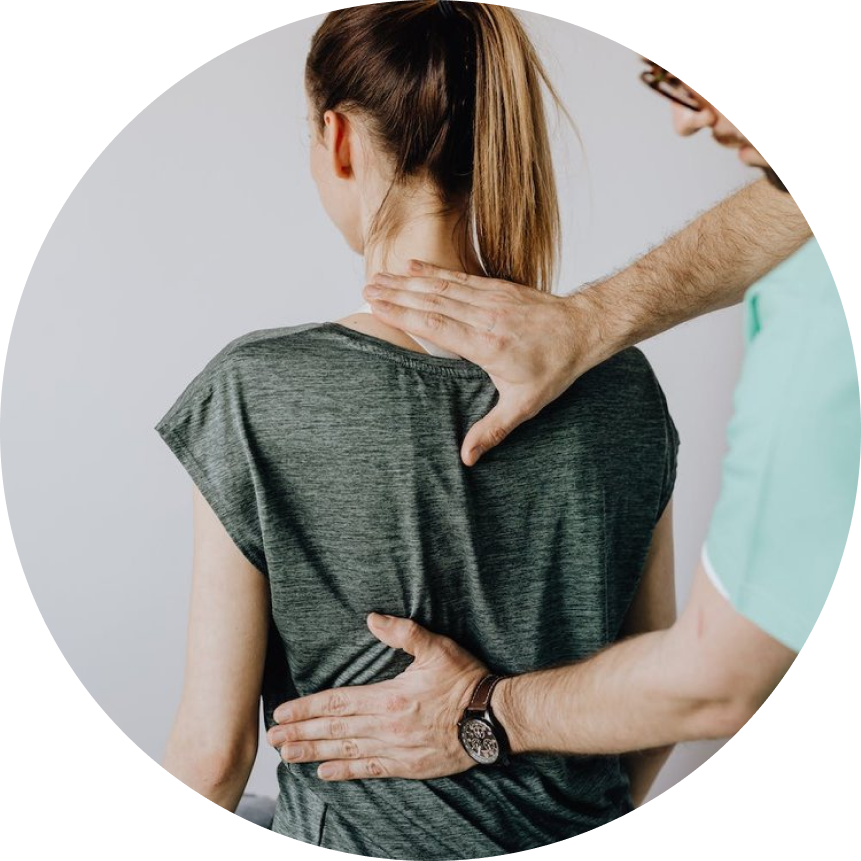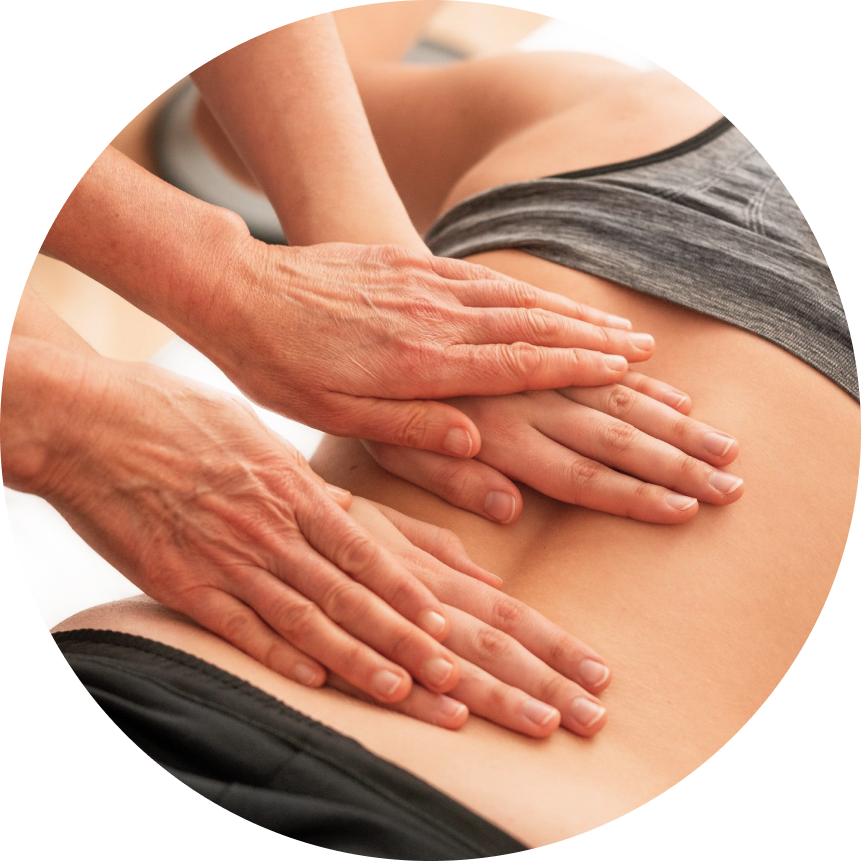We are committed to providing high-quality care with no disruption in our Waterloo and Listowel locations. Our team of experienced and compassionate therapists will continue to offer a wide range of mental health services and a warm and welcoming environment where clients can feel safe, heard, and supported. Take control of your mental and physical wellness by booking an appointment below.

Massage therapy is a hands-on approach to help relieve tension and stress, promote relaxation, and alleviate pain in your body, helping you feel refreshed and rejuvenated.

Reflexology is an ancient practice rooted in various cultures that involves applying pressure to specific points on the feet, hands, and ears that correspond to different organs and systems in the body.

Extensive research has proven the positive effectives of Matrix Repatterning in alleviating a wide range of painful and limiting conditions, allowing people to enjoy a renewed level of vibrant well-being.

Osteopathy is a hands-on approach to healthcare that involves assessing and treating joints and soft tissues using manual techniques to help restore proper body mechanics, nerve impulses, and circulation.
Massage therapy is a practice that offers numerous benefits for your overall well-being and relaxation. It involves the skilled manipulation of soft tissues in your body, such as muscles, tendons, and ligaments, using various techniques and pressures. Through the gentle touch of a trained massage therapist, this therapy aims to promote healing, reduce stress, and enhance your physical and mental health.
How it helps:
The benefits of massage therapy extend far beyond simple relaxation. It can help alleviate physical discomfort by relieving muscle tension, reducing pain, and improving joint mobility. Whether you’re dealing with chronic pain, sports injuries, or simply the strain of everyday activities, massage therapy can provide relief and support your body’s natural healing process.
Beyond its physical effects, massage therapy also nurtures your emotional and mental well-being. Massage therapy serves as a sanctuary where you can let go of the worries and burdens you carry. It can reduce stress hormones, promote the release of feel-good endorphins, and enhance your mood.
Experience the transformative power of massage therapy in Waterloo and Listowel. Book your session with our expert therapists today and take the first step towards improved wellness in our vibrant community.
This general approach to massage is designed to improve circulation, decrease muscle tension, and reduce stress in areas of the body that require attention. Your therapist will use a range of techniques to achieve these benefits. Your therapist will tailor the treatment to your individual needs, paying close attention to areas of tension and discomfort.
A prenatal massage is a specialized form of massage therapy that is designed specifically for expectant mothers. This type of massage can be incredibly beneficial for both the mother and the developing baby. By using gentle pressure and specialized techniques, the therapist can help to increase circulation and reduce fluid buildup, which can help to alleviate discomfort and promote overall wellness.
Prenatal massage can also have a positive impact on mental well-being. Feeling more relaxed and at ease during pregnancy, can improve your overall mood and emotional well-being. Your therapist will work closely with you throughout your pregnancy to address any concerns or discomforts you may have and to tailor the massage to your specific needs and preferences.
Deep tissue massage is a therapeutic technique where the therapist applies firm pressure to release knots or scar tissue that have formed in the muscles. The pressure is often more intense than that used in other types of massage and can be uncomfortable at times. However, the therapist will check in with you throughout the treatment to ensure that you are comfortable and to adjust the pressure as needed.
Sports massage is a specialized form of massage therapy that is tailored specifically to athletes and active individuals. This type of massage can be helpful for anyone who participates in regular physical activity.
During a sports massage, the therapist will focus on areas of the body that are particularly prone to stress and tension. One of the key benefits of sports massage is its ability to promote faster recovery from workouts and training sessions. By applying increased pressure to the muscles, the therapist can help to flush out toxins and increase circulation, which can speed up the healing process and reduce muscle soreness.
Trigger points, or myofascial trigger points, are hypersensitive areas in muscles with palpable nodules. They cause pain that can refer to different parts of the body. When compressed, the client may feel tenderness and pain in a specific pattern.
Your therapist will discuss this with you and closely monitor your pain levels to safely dissipate the trigger point. Swedish massage techniques can then be used to reduce subsequent pain.
Fascia, a connective tissue in the body, is thin, tough, and less vascular than muscle, making it slow to heal from injury and pain. If a therapist releases the fascia, it can speed up healing and recovery.
Myofascial work can be done by picking up the fascia or rolling it between fingers to increase blood flow. The therapist will carefully monitor your comfort level throughout the process.

Reflexology is an ancient practice rooted in various cultures that involves applying pressure to specific points on the feet, hands, and ears that correspond to different organs and systems in the body. By stimulating these reflex points, reflexology promotes energy flow, helping to reduce stress, improve circulation, and alleviate pain. This holistic therapy can also enhance immune function, support detoxification, and balance hormones, offering a natural and non-invasive way to improve overall health and well-being.
How it Helps:
During a reflexology session, our reflexologists use their hands to massage and press reflex points, promoting relaxation and targeting specific health concerns. Many people find reflexology a soothing experience that leaves them feeling balanced and rejuvenated. Whether you seek stress relief, pain management, or simply a moment of self-care, reflexology provides a gentle yet effective approach to healing, helping you feel your best from head to toe.

\Osteopathy is a hands-on approach to healthcare that involves assessing and treating joints and soft tissues using manual techniques. Based on the principles established by Dr. Andrew Taylor Still, osteopathic manual practitioners work through all joints and soft tissues to identify any asymmetries and then align the muscles, ligaments, and bones to facilitate the body’s natural healing and regulation process.
How it helps:
The foundation of osteopathy lies in a deep understanding of anatomy and physiology, and the ultimate goal is to restore proper body mechanics, nerve impulses, and the circulation of blood and lymphatics. By identifying and addressing the root causes of pain and dysfunction, osteopathy can help promote overall health and well-being. Whether you’re dealing with a specific injury or simply looking to optimize your body’s natural functions, an osteopathic manual practitioner can provide personalized care and support throughout your journey.
The Tensegrity Matrix is a robust and adaptable framework that connects the cells of the body. It functions like an intercellular internet, providing critical mechanical, chemical, and electrical signals for optimal cellular health. Many health conditions can result from disruptions to this communication system. The body’s core structures bear the brunt of most injuries. When the molecular structure of the matrix responds to injury, it creates a focal area of tension known as a primary restriction. Primary restrictions can cause pain and a host of health problems, as structures affected by them lose their connection to the cellular communication system.
How it helps:
Matrix Repatterning is a proven method that can precisely identify the source of primary restrictions through the electronic changes in cell structure accompanying injury. Certified Matrix Repatterning Practitioners use gentle manual pressure to encourage the structures contributing to the condition to return to a normal state of tone. This process allows the entire body to be restored to optimal, pain-free function. Matrix Repatterning has helped thousands of individuals suffering from a range of conditions associated with structural imbalances, including back pain, headaches, and digestive complaints.
During a Matrix Repatterning session, a practitioner will evaluate your posture, ranges of motion, neurological signs, joint stability, and other factors to determine the location of primary restrictions and develop a treatment plan. Treatment is gentle and may require multiple sessions to release structural imbalances that have developed and been compensated for over a lifetime. Since long-term imbalances are often being corrected, the body may respond for several days after each treatment, with reduced symptoms being the most common response. Extensive clinical research has demonstrated the remarkable effectiveness of Matrix Repatterning in alleviating a wide range of painful and limiting conditions, allowing people from all walks of life to enjoy a renewed level of vibrant well-being.
The following conditions are associated with the structural imbalance and may respond well to Matrix Repatterning**:
Headaches and migraines
Head Injury & Concussion
Dizziness & Ear Noise (Tinnitus)
Temporomandibular Joint Problems (TMJ)
Sleep problems
Snoring and apnea
Neck & Upper Back Pain
Low Back Pain
Scoliosis
Shoulder & Arm Pain
Carpal tunnel syndrome
Digestive complaints
Gastro-Esophageal Reflux (GERD)
Circulatory conditions
Menstrual pain
Urinary Incontinence
Erectile Dysfunction
Hip, Knee, Ankle, and Foot Pain
Fibromyalgia
Chronic Pain
**Matrix Repatterning is a clinically-proven method, which has been shown to have a significant benefit with many of these conditions. The treatment of any specific condition is based on the applicable scope of practice of your Practitioner.
The examination process usually involves a detailed assessment of posture, ranges of motion, neurological signs, joint stability and other tests, when applicable. Your Practitioner will determine the location of the primary restrictions, in order to formulate a treatment plan. Treatment is very gentle, since the cells retain the ‘memory’ of the normal structure, and only require precise coaxing in order to be repatterned. A series of treatments can release structural imbalances that have developed and been compensated for, over a lifetime, until the body has been restored to optimal function.
Since long-term imbalances are often being corrected, the body may respond for a period of several days after each treatment. The most common response is a reduction of symptoms, however, a temporary aggravation of symptoms may also occur.
Matrix Repatterning, developed by Dr. George Roth, represents the culmination of 30 years of research into the structural basis of health. Practitioners throughout the world, who have studied and applied these principles, are finding remarkable success in relieving many acute and chronic conditions. Certified Matrix Repatterning Practitioners have studied these methods and may be able to help you overcome your health challenges using this breakthrough technology. Matrix Repatterning has been clinically proven to resolve many painful and limiting conditions, with profound and lasting results, for people from all walks of life, allowing them to enjoy a renewed level of vibrant well-being.
Raven is a knowledgeable clinician, and is a credit to the field. Stone Silo Counselling and Wellness are lucky to have her.
I have been struggling with a sore neck that has been causing headaches. Raven took the time to speak to me prior to my massage to find out what the best treatment would be. It was the best therapeutic massage I have ever had. Raven is friendly, approachable and professional and I appreciate how she helped me. The front desk employee was also very pleasant. I will definitely be a return customer.
Excellent! Shannon was professional, clear in her treatment plan and responsive to my needs! Would recommend her to family and friends.
Raven is such a thoughtful and intentional practitioner! She checked in about my comfort and the pressure, she was clear in her communications and instructions, and I appreciate that she responded to my questions by sharing some of her knowledge about massage and muscles and the body! I had a really positive experience and felt comfortable and grateful!
Thank you Shannon for your service. you are number 1 in kitchener waterloo, congratulations for your work you do 100%... the best service I have experienced. Thank you very much.
It was a very calm welcoming environment and not as awkward sharing personal info as it has been with other therapy in the past.
490 Dutton Dr, Unit B6
Waterloo, ON, N2L 6H7
(519) 208-0544
125 Wallace Ave. North,
Listowel, ON, N4W 1K8
(519) 208-0544
© 2024 Stone Silo Counselling & Wellnes. All Rights Reserved.